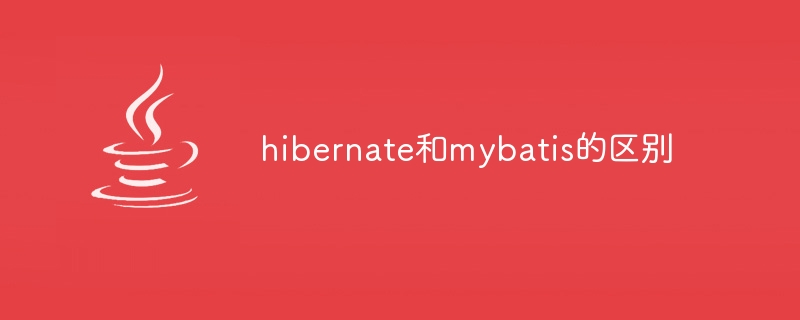One List Mapping
If there is a List object in the persistence class, the List can be mapped through the class element or annotation in the mapping file.
For example, a question has Multiple answers:

package list;
import java.util.List;
public class Question {
private int id;
private String qname;
private List<String> answers;
public int getId() {
return id;
}
public void setId(int id) {
this.id = id;
}
public String getQname() {
return qname;
}
public void setQname(String qname) {
this.qname = qname;
}
public List<String> getAnswers() {
return answers;
}
public void setAnswers(List<String> answers) {
this.answers = answers;
}
}2) Create a mapping file<?xml version='1.0' encoding='UTF-8'?>
<!DOCTYPE hibernate-mapping PUBLIC
"-//Hibernate/Hibernate Mapping DTD 3.0//EN"
"http://hibernate.sourceforge.net/hibernate-mapping-3.0.dtd">
<hibernate-mapping>
<class name="list.Question" table="quesion">
<cache usage="read-write"/>
<id name="id">
<generator class="increment"></generator>
</id>
<property name="qname"></property>
<list name="answers" table="answers">
<key column="qid"></key>
<index column="type"></index>
<element column="answer" type="string"></element>
</list>
</class>
</hibernate-mapping>3) Add <!-- List of XML mapping files --> <mapping resource="list/Question.hbm.xml"/># in the global configuration file 4) Test
package list;
import java.util.ArrayList;
import org.hibernate.Session;
import org.hibernate.SessionFactory;
import org.hibernate.cfg.Configuration;
public class Test {
public static void main(String[] args) {
Configuration cfg = new Configuration();
cfg.configure("hibernate.cfg.xml");
SessionFactory factory = cfg.buildSessionFactory();
Session session = factory.openSession();
session.beginTransaction();
ArrayList<String> list1 = new ArrayList<String>();
list1.add("answer1");
list1.add("answer2");
Question question1 = new Question();
question1.setQname("question1");
question1.setAnswers(list1);
session.save(question1);
session.getTransaction().commit();
session.close();
//factory.close();
}
}


package list;
import java.util.List;
public class Question {
private int id;
private String qname;
private List<Answer> answers;
public int getId() {
return id;
}
public void setId(int id) {
this.id = id;
}
public String getQname() {
return qname;
}
public void setQname(String qname) {
this.qname = qname;
}
public List<Answer> getAnswers() {
return answers;
}
public void setAnswers(List<Answer> answers) {
this.answers = answers;
}
}package list;
public class Answer {
private int id;
private String answername;
private String postedBy;
public int getId() {
return id;
}
public void setId(int id) {
this.id = id;
}
public String getAnswername() {
return answername;
}
public void setAnswername(String answername) {
this.answername = answername;
}
public String getPostedBy() {
return postedBy;
}
public void setPostedBy(String postedBy) {
this.postedBy = postedBy;
}
}2) Configuration file<?xml version='1.0' encoding='UTF-8'?>
<!DOCTYPE hibernate-mapping PUBLIC
"-//Hibernate/Hibernate Mapping DTD 3.0//EN"
"http://hibernate.sourceforge.net/hibernate-mapping-3.0.dtd">
<hibernate-mapping>
<class name="list.Question" table="quesion">
<cache usage="read-write"/>
<id name="id">
<generator class="increment"></generator>
</id>
<property name="qname"></property>
<list name="answers" cascade="all">
<key column="qid"></key>
<index column="type"></index>
<one-to-many class="list.Answer"/>
</list>
</class>
<class name="list.Answer" table="answers">
<cache usage="read-write"/>
<id name="id">
<generator class="increment"></generator>
</id>
<property name="answername"></property>
<property name="postedBy"></property>
</class>
</hibernate-mapping>3 ) Add configuration <!-- List of XML mapping files --> <mapping resource="list/Question.hbm.xml"/>4 in hibernate.cfg.xml 4) Test
package list;
import java.util.ArrayList;
import org.hibernate.Session;
import org.hibernate.SessionFactory;
import org.hibernate.cfg.Configuration;
public class Test {
public static void main(String[] args) {
Configuration cfg = new Configuration();
cfg.configure("hibernate.cfg.xml");
SessionFactory factory = cfg.buildSessionFactory();
Session session = factory.openSession();
session.beginTransaction();
Answer ans1 = new Answer();
ans1.setAnswername("ans1");
ans1.setPostedBy("post1");
Answer ans2 = new Answer();
ans2.setAnswername("ans2");
ans2.setPostedBy("post2");
Answer ans3 = new Answer();
ans3.setAnswername("ans3");
ans3.setPostedBy("post3");
ArrayList<Answer> list1 = new ArrayList<Answer>();
list1.add(ans1);
list1.add(ans2);
list1.add(ans3);
Question question1 = new Question();
question1.setQname("question1");
question1.setAnswers(list1);
session.save(question1);
session.getTransaction().commit();
session.close();
//factory.close();
}
}The above is the detailed content of Detailed explanation of Hibernate collection mapping. For more information, please follow other related articles on the PHP Chinese website!
 如何优化Java集合排序性能Jun 30, 2023 am 10:43 AM
如何优化Java集合排序性能Jun 30, 2023 am 10:43 AMJava是一种功能强大的编程语言,广泛应用于各类软件开发中。在Java开发中,经常会涉及到对集合进行排序的场景。然而,如果不对集合排序进行性能优化,可能会导致程序的执行效率下降。本文将探讨如何优化Java集合排序的性能。一、选择合适的集合类在Java中,有多种集合类可以用来进行排序,如ArrayList、LinkedList、TreeSet等。不同的集合类在
 SpringBoot项目里怎么集成HibernateMay 18, 2023 am 09:49 AM
SpringBoot项目里怎么集成HibernateMay 18, 2023 am 09:49 AM在SpringBoot项目中集成Hibernate前言Hibernate是一个流行的ORM(对象关系映射)框架,它可以将Java对象映射到数据库表,从而方便地进行持久化操作。在SpringBoot项目中,集成Hibernate可以帮助我们更轻松地进行数据库操作,本文将介绍如何在SpringBoot项目中集成Hibernate,并提供相应的示例。1.引入依赖在pom.xml文件中引入以下依赖:org.springframework.bootspring-boot-starter-data-jpam
 Java JPA 面试题精选:检验你的持久化框架掌握程度Feb 19, 2024 pm 09:12 PM
Java JPA 面试题精选:检验你的持久化框架掌握程度Feb 19, 2024 pm 09:12 PM什么是JPA?它与JDBC有什么区别?JPA(JavaPersistenceapi)是一个用于对象关系映射(ORM)的标准接口,它允许Java开发者使用熟悉的Java对象来操作数据库,而无需编写直接针对数据库的sql查询。而JDBC(JavaDatabaseConnectivity)是Java用于连接数据库的标准API,它需要开发者使用SQL语句来操作数据库。JPA将JDBC封装起来,为对象-关系映射提供了更方便、更高级别的API,简化了数据访问操作。在JPA中,什么是实体(Entity)?实体
 Java错误:Hibernate错误,如何处理和避免Jun 25, 2023 am 09:09 AM
Java错误:Hibernate错误,如何处理和避免Jun 25, 2023 am 09:09 AMJava是一种面向对象编程语言,它被广泛地应用于软件开发领域。Hibernate是一种流行的Java持久化框架,它提供了一种简单且高效的方式来管理Java对象的持久化。然而,开发过程中经常会遇到Hibernate错误,这些错误可能会导致程序的异常终止或者不稳定。如何处理和避免Hibernate错误成为了Java开发者必须掌握的能力。本文将介绍一些常见的Hib
 hibernate和mybatis有哪些区别Jan 03, 2024 pm 03:35 PM
hibernate和mybatis有哪些区别Jan 03, 2024 pm 03:35 PMhibernate和mybatis的区别:1、实现方式;2、性能;3、对象管理的对比;4、缓存机制。详细介绍:1、实现方式,Hibernate是一个完整的对象/关系映射解决方案,将对象与数据库表进行映射,MyBatis则需要开发者手动编写SQL语句以及ResultMap;2、性能,Hibernate在开发速度上可能比MyBatis快,因为Hibernate简化了DAO层等等。
 Java Hibernate中一对多和多对多关系的映射方式是什么May 27, 2023 pm 05:06 PM
Java Hibernate中一对多和多对多关系的映射方式是什么May 27, 2023 pm 05:06 PMHibernate的一对多和多对多Hibernate是一个优秀的ORM框架,它简化了Java应用程序与关系型数据库之间的数据访问。在Hibernate中,我们可以使用一对多和多对多的关系来处理复杂的数据模型。Hibernate的一对多在Hibernate中,一对多关系是指一个实体类对应多个另一个实体类。比如,一个订单(Order)可以对应多个订单项(OrderItem),一个用户(User)可以对应多个订单(Order)。要在Hibernate中实现一对多关系,需要在实体类中定义一个集合属性来存
 优化Java集合查找性能的技巧Jun 30, 2023 pm 02:57 PM
优化Java集合查找性能的技巧Jun 30, 2023 pm 02:57 PMJava开发中,使用集合是非常常见的操作之一。在实际开发中,经常需要对集合进行元素的查找操作。而集合的查找性能的高低直接影响着程序的执行效率和用户的使用体验。本文将介绍几种优化集合元素查找性能的方法。一、使用合适的集合类在Java中,有多种集合类可以选择,例如ArrayList、LinkedList、HashSet、TreeSet等等。不同的集合类有着不同的
 如何在Hibernate中执行批量插入更新操作?Aug 27, 2023 pm 11:17 PM
如何在Hibernate中执行批量插入更新操作?Aug 27, 2023 pm 11:17 PM在本文中,我们将看到如何在Hibernate中执行批量插入/更新。每当我们执行一条sql语句时,我们都是通过对数据库进行网络调用来完成的。现在,如果我们必须向数据库表中插入10个条目,那么我们必须进行10次网络调用。相反,我们可以通过使用批处理来优化网络调用。批处理允许我们在单个网络调用中执行一组SQL语句。为了理解和实施这一点,让我们定义我们的实体−@EntitypublicclassParent{@Id@GeneratedValue(strategy=GenerationType.AUTO)


Hot AI Tools

Undresser.AI Undress
AI-powered app for creating realistic nude photos

AI Clothes Remover
Online AI tool for removing clothes from photos.

Undress AI Tool
Undress images for free

Clothoff.io
AI clothes remover

AI Hentai Generator
Generate AI Hentai for free.

Hot Article

Hot Tools

EditPlus Chinese cracked version
Small size, syntax highlighting, does not support code prompt function

SublimeText3 English version
Recommended: Win version, supports code prompts!

MinGW - Minimalist GNU for Windows
This project is in the process of being migrated to osdn.net/projects/mingw, you can continue to follow us there. MinGW: A native Windows port of the GNU Compiler Collection (GCC), freely distributable import libraries and header files for building native Windows applications; includes extensions to the MSVC runtime to support C99 functionality. All MinGW software can run on 64-bit Windows platforms.

SublimeText3 Linux new version
SublimeText3 Linux latest version

SAP NetWeaver Server Adapter for Eclipse
Integrate Eclipse with SAP NetWeaver application server.







